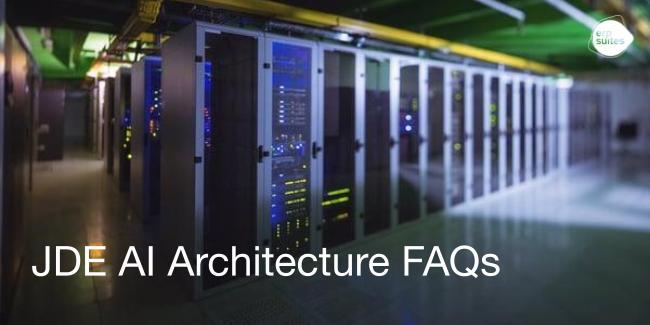How Machine Learning Works and Why You Should Care
May 30th, 2024
3 min read
.png?width=960&height=540&name=Blog%20Images%20(40).png)
ML, AI, LLM – when it comes to the newest technology in use today, there are a lot of acronyms. To wield these powerful tools, it’s important to understand them. ML, or Machine Learning, is often used interchangeably with AI (Artificial Intelligence), but in fact the two technologies are different, in very specific and critical ways.
In this blog, we’ll cover what Machine Learning is, how it works, and how you can use it for your business.
Building A Neural Network
It is important not to confuse machine learning with artificial intelligence (AI). While AI is a broad term for machines that can carry out tasks in an intelligent way, machine learning (ML) is a specific method within AI that focuses on pattern recognition and prediction.
Thus, contrary to first instinct, machine learning is not about a machine becoming “smart”, but rather becoming better at identifying patterns. Machine learning algorithms can only learn and identify patterns within the confines of the data they are trained on. Those patterns form what is known as a neural network.
The neural network is composed of huge amounts of data processed through a selected machine learning model (MLM). This in turn builds out a vast network of neural nodes, located where the MLM recognizes like patterns in that dataset. The MLM will build a node where it sees certain data points consistently coupled together and the network is built out from the multitude of various patterns the MLM recognizes and identifies.
For example, a dataset includes two groups of inputs: Points A, B, and C could represent different products for an e-commerce website. Or they could be different stages of product traveling through the manufacturing process, from order creation to supply chain. The point is, there are plenty of ways to arrange your own unique data in a neural network model.
.png?width=500&height=500&name=3%20input%20neural%20network%20(1).png)
Point A might be a smartphone, Point B might be a smartphone case, and Point C could be a screen protector. The selected dataset passes through a machine learning model, which observes where each of the points meet. Those coupling points would be where the MLM places its first nodes.
The MLM might observe meeting points, or nodes, found between the other nodes – potential indications of the e-commerce site customers interest in all three items, which could be indicative of, or instigate, a promotional bundle occurring. Nodes are placed on all these respective pairings, too.
The node creation expands from there out into a vast array of recognized, identified patterns, and thus the neural network is formed. After all the data is processed in the neural network, you’re left with the output. You can use this information in many ways, from applying it to marketing efforts to performing statistical regressions for further behavior analysis to detecting anomalies and beyond.
(One note: The way neural networks are built and trained remains somewhat mysterious even to experts. Models are trained to build more neural networks, and networks that don't fit the training parameters are discarded. This allows the networks to continuously learn and adapt based on new data.)
Predicting Desires
It is a truth universally acknowledged that a Machine Learning Model is in want of datasets to process. Fresh datasets are the raw materials the MLMs use to create these intricate and expansive neural networks, studded throughout with valuable insights and information.
Take Company Z’s dataset about customers who are searching for vacations. Customer X is researching vacations to Jamaica, while Customer Y is researching vacations to Iceland. The neural network comprised from Customer X’s respective data nodes indicates they may be interested in purchasing flip flops, to wear on their prospective trip to Jamaica.
Company Z takes that information compiled by the MLM and the neural network and uses it to profile Customer X and ultimately serve them ads for flip flops for their upcoming trip. That same neural network is also able to inform Company Z’s advertising to Customer Y – flip flops are not on the checklist for Iceland, but snow boots are, so Company Z is able to shift their advertising to accommodate the patterns Customer Y is predicted to tread.
Make It Work for You
When paired with ERP systems, machine learning can accelerate what is possible in the workplace. The power of ML is such that it can parse through ERP system data much faster and more thoroughly than a human could. It can identify patterns in ERP system data that a human might not even see. Putting these possibilities to work in a business application is just the beginning of how ML can be paired with an ERP – like JD Edwards – for business success.
By combining different datasets like sales, payments, marketing, and industry data, patterns can be identified about customer purchasing behaviors. This allows companies to better target customers, predict churn, and proactively retain accounts.
ML also helps optimize inventory storage, profiling, and picking paths in warehouses. By understanding commonly purchased item combinations, items can be grouped, and routes planned to minimize travel time. This increases picking efficiency and speeds up order fulfillment
In manufacturing, machine learning can analyze equipment data to predict maintenance needs and downtime, improving efficiency. Identifying patterns in past data helps manufacturers avoid costly repairs and outages.
We Can Help
Machine learning isn't just about flashy tech. It's about making smarter business decisions based on the power of data. ERP Suites has an expert team ready to help you realize your potential.
Reach out to us to get started.
Leyla Shokoohe is an award-winning journalist with over a decade of experience, specializing in workplace and journalistic storytelling and marketing. As content manager at ERP Suites, she writes articles that help customers understand every step of their individual ERP journey.



.png?width=650&height=325&name=Blog%20Images%202_1%20(4).png)
.png?width=650&height=325&name=Blog%20Images%202_1%20(5).png)
.png?width=650&height=325&name=Blog%20Images%202_1%20(3).png)
.png?width=650&height=325&name=Blog%20Images%202_1%20(2).png)
.png?width=650&height=325&name=Blog%20Images%202_1%20(1).png)
.png?width=960&height=540&name=Blog%20Images%20(96).png)

.png?width=960&height=540&name=Blog%20Images%20(90).png)
.png?width=960&height=540&name=Blog%20Images%20(88).png)
.png?width=960&height=540&name=Blog%20Images%20(87).png)
.png?width=960&height=540&name=Blog%20Images%20(86).png)
.png?width=960&height=540&name=Blog%20Images%20(85).png)
.png?width=960&height=540&name=Blog%20Images%20(83).png)
.png?width=960&height=540&name=Blog%20Images%20(82).png)
.png?width=960&height=540&name=Blog%20Images%20(80).png)